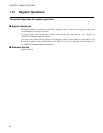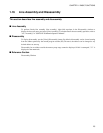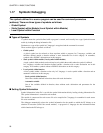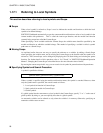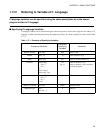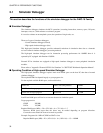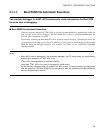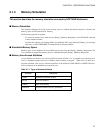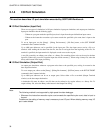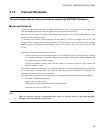
32
CHAPTER 2 DEPENDENCE FUNCTIONS
2.1 Simulator Debugger
This section describes the functions of the simulator debugger for the F
2
MC-16 Family.
■ Simulator Debugger
The simulator debugger simulates the MCU operations (executing instructions, memory space, I/O ports,
interrupts, reset, etc.) with software to evaluate a program.
It is used to evaluate an uncompleted system, the operation of single units, etc.
There are 2 types of simulator debuggers.
- Normal simulator debugger (normal)
- High-speed simulator debugger (fast)
This high-speed simulator debugger provides substantial reductions in simulation time due to a dramatic
review of normal simulator debugger's processing methods.
The high-speed simulator debugger can be instruction processing performance for 10MIPS when it is
operated by PC equipped with Pentium4 2.0GHz.
External I/F for simulator are equipped to high-speed simulator debugger to create peripheral simulation
modules.
Please refer to "Appendix I External I/F DLL for Simulator" in "SOFTUNE Workbench Operation Manual".
■ Operating Condition of High-speed Simulator Debugger
The high-speed simulator debugger requires much more RAM space on the host PC than that of normal
simulator debugger.
The required RAM size depends largely on your program size.
For the required available RAM space, see the table below:
Insufficient RAM space will lead to an extreme decrease in simulation speed.
Target program size
CODE XX(KB)
DATA YY(KB)
Required RAM space (MB) = 20 + (XX / 64) × 6 + (YY / 64) × 1.5
However, RAM space larger than the above may be needed depending on program allocation.
Consecutive areas should be reserved as much as possible.
Example: Program with 1 MB of CODE and DATA sizes
Required RAM space (MB) = 20 + (1024 / 64) × 6 + (1024 / 64) × 1.5 = 140MB
Basic use Fs907s.exe (This product) 20MB
CODE size of target program per 64 KB 6MB
DATA size of target program per 64 KB 1.5MB



